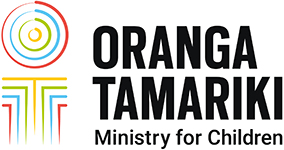Years ago the American cartoonist Alison Bechdel made a joke in a comic strip. Two women enter a cinema with simple criteria for the kind of film they want to see: one with a scene in which two women speak about something other than men. They exit almost immediately, disappointed, unable to find anything to watch.
This has been adopted as a way to rate theatre and films on their gender diversity: Does it pass the Bechdel Test?
Other minority communities have in turn developed their own tests of representation. One of these for the disabled community is the Fries Test.
 I was introduced to the Fries Test by my co-editor Nathan Mudge while we were collaborating – along with other Deaf and disabled creatives, Playmarket and Arts Access Aotearoa – on a guide called Working Together: accessibility in Aotearoa theatre.
I was introduced to the Fries Test by my co-editor Nathan Mudge while we were collaborating – along with other Deaf and disabled creatives, Playmarket and Arts Access Aotearoa – on a guide called Working Together: accessibility in Aotearoa theatre.
Building on the principles of the Bechdel Test, the Fries Test asks creatives and audiences to consider both if disabled people are included in a work and who their presence in these stories is serving. It asks questions like:
Does a work have more than one disabled character? Do the disabled characters have their own narrative purpose other than the education and profit of a non-disabled character? Is the character’s disability just a part of them, or are they eradicated either by curing or killing them?
Although I had never seen these ideas formalised into a specific “test”, these kinds of questions continually run through my head as a disabled creative and consumer of art.
Performing arts and writing
My areas of interest are particularly performing arts and writing.
 Working in these artforms, I have personally reaped the benefits of creative practitioners extending these “tests” of their work beyond the representation of women.
Working in these artforms, I have personally reaped the benefits of creative practitioners extending these “tests” of their work beyond the representation of women.
I see casting calls for disabled characters wanting actors with lived experience; development opportunities for disabled writers; and access programming in festivals.
For me, taking up these opportunities has also meant coming armed with a list of questions to do with my own access and my ability to take part. Does the stage have a ramp? Does the writer's residency have stairs? Am I able to bring a support worker? How many rest breaks will there be in this process? The kinds of questions all disabled people carry their own versions of.
These days Bechdel regrets that what was a clever comment in a couple of frames back in 1985 has evolved into an actual measure of anything. It can be so easily oversimplified – used to say, “Yes, we’ve ‘done’ diversity and inclusion” by meeting a minimum standard of writing a “strong, female character” who does not live for others around her.
Addressing the barriers that communities facce
Representation can be used as a feel-good shortcut: art can showcase diverse experiences and stop there. But without actually addressing the barriers that communities face, creators may not have done anything of substance.
 Deaf and disabled people’s representation in art is a particularly strong litmus test of the depth of this change. As with women’s representation, there’s a risk we will develop a comfortable and complacent sense that, for example, casting disabled people in our film, or theatre work is inherently inclusive and an end in itself.
Deaf and disabled people’s representation in art is a particularly strong litmus test of the depth of this change. As with women’s representation, there’s a risk we will develop a comfortable and complacent sense that, for example, casting disabled people in our film, or theatre work is inherently inclusive and an end in itself.
But it is little more than tokenism if it’s not accompanied by a willingness to adapt our creative processes and to consider who is in the room and how we can ensure they are able to make their best work.
Measuring work against these kinds of tests is a way of asking: How much humanity do you recognise in my experience?
Ableist culture prefers disability to be a symbolic or moral shorthand rather than a complex human experience. This is neat, tidy and comfortable. The reality is that even authentic disabled stories are shaped by years of active exclusion from society and a continued cultural acceptance that we are spoken about and for.
The kinds of stories we tell about disability and who gets to tell them needs to change. This will only have real value if we include in our process the sometimes uncomfortable, untidy, unpredictable reality of disabled lives.
We need to develop a working culture that is adaptable. One that considers what we do if the lift breaks down, a support worker calls in sick or someone needs more breaks than anticipated. One that prioritises how we work with each other in the moment over the end goal.
Henrietta Bollinger’s new collection of essays, Articulations, will be launched by Tender Press on 26 September. You can order a copy online




